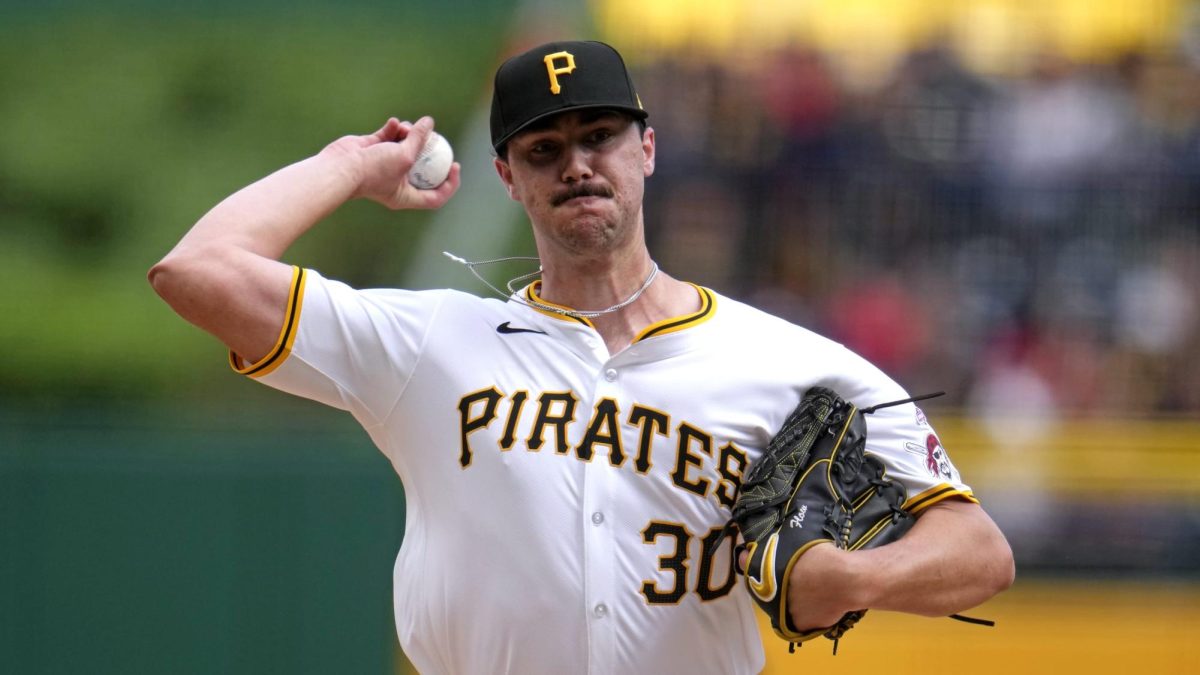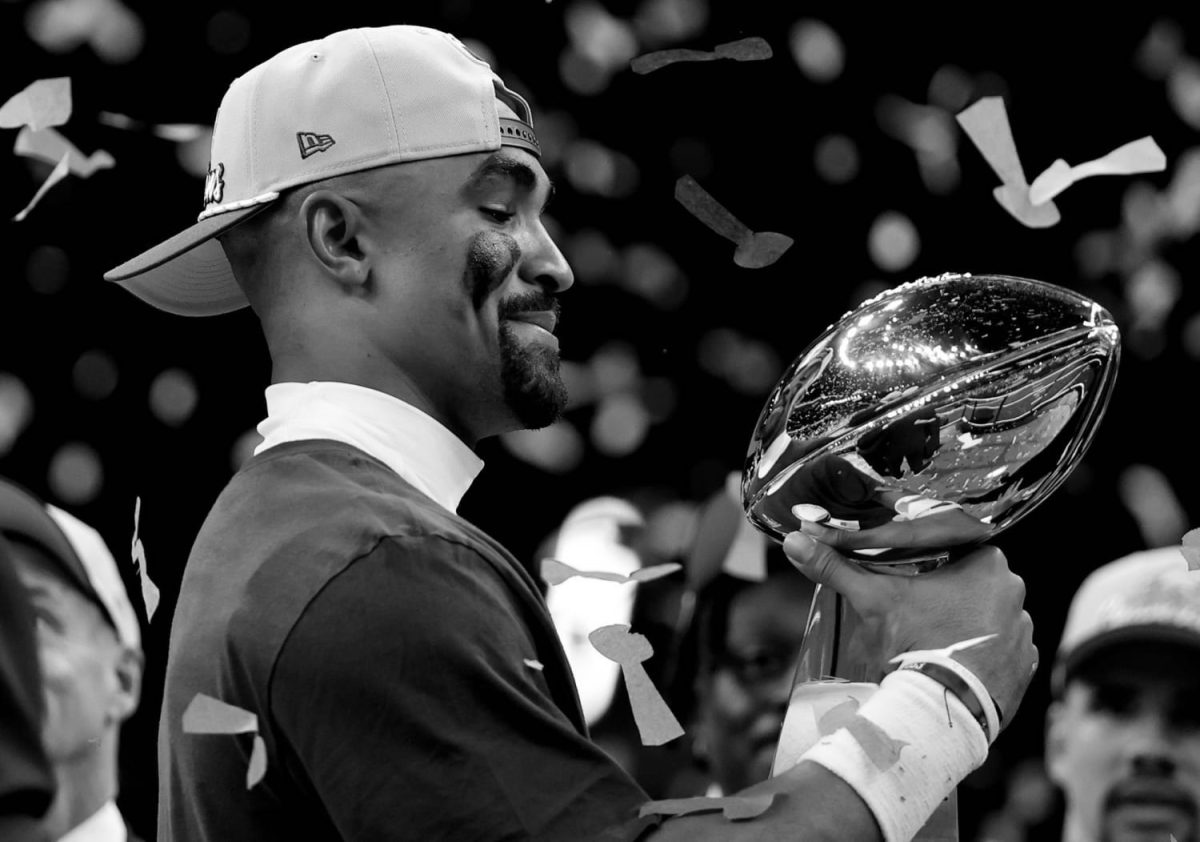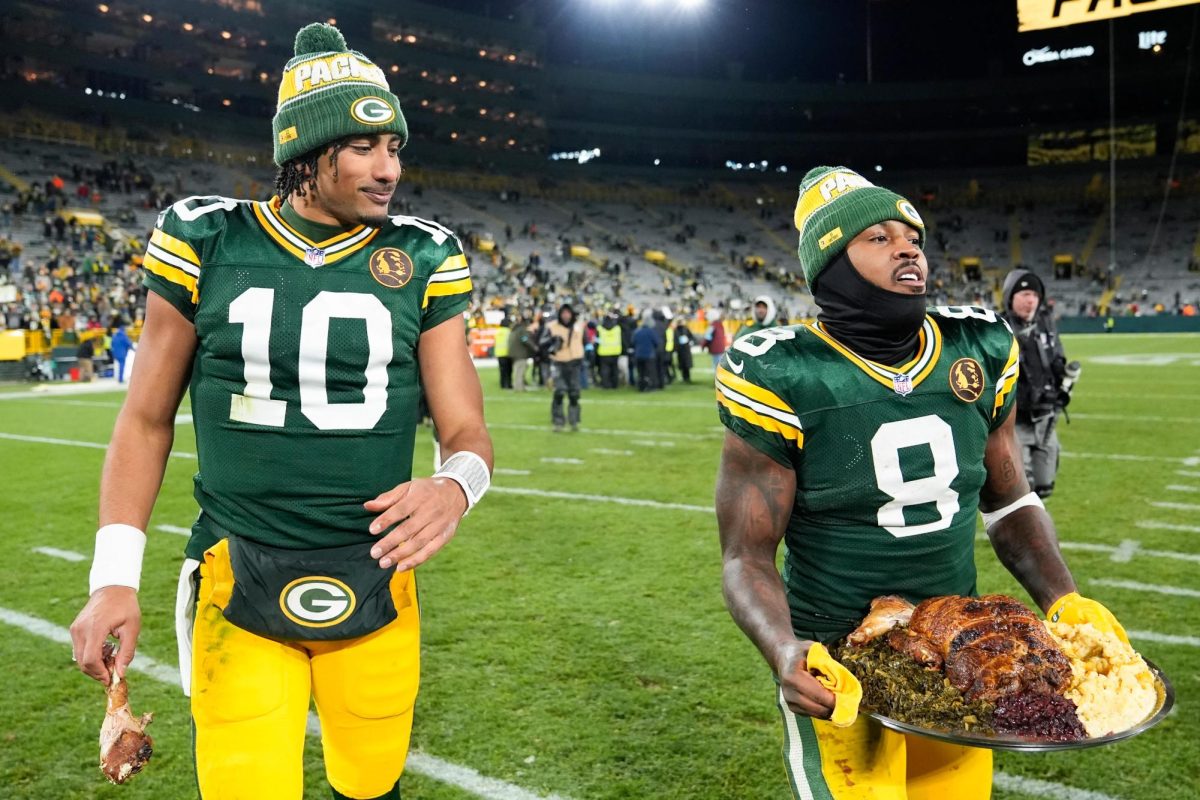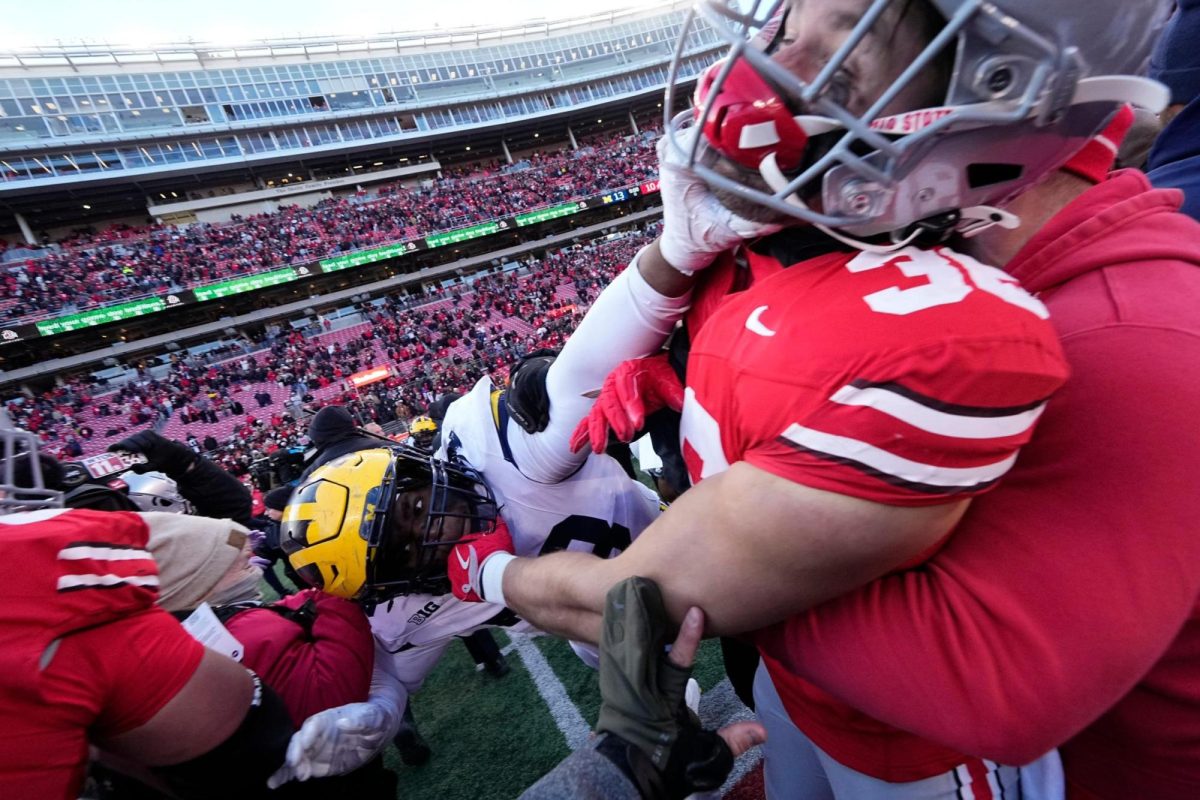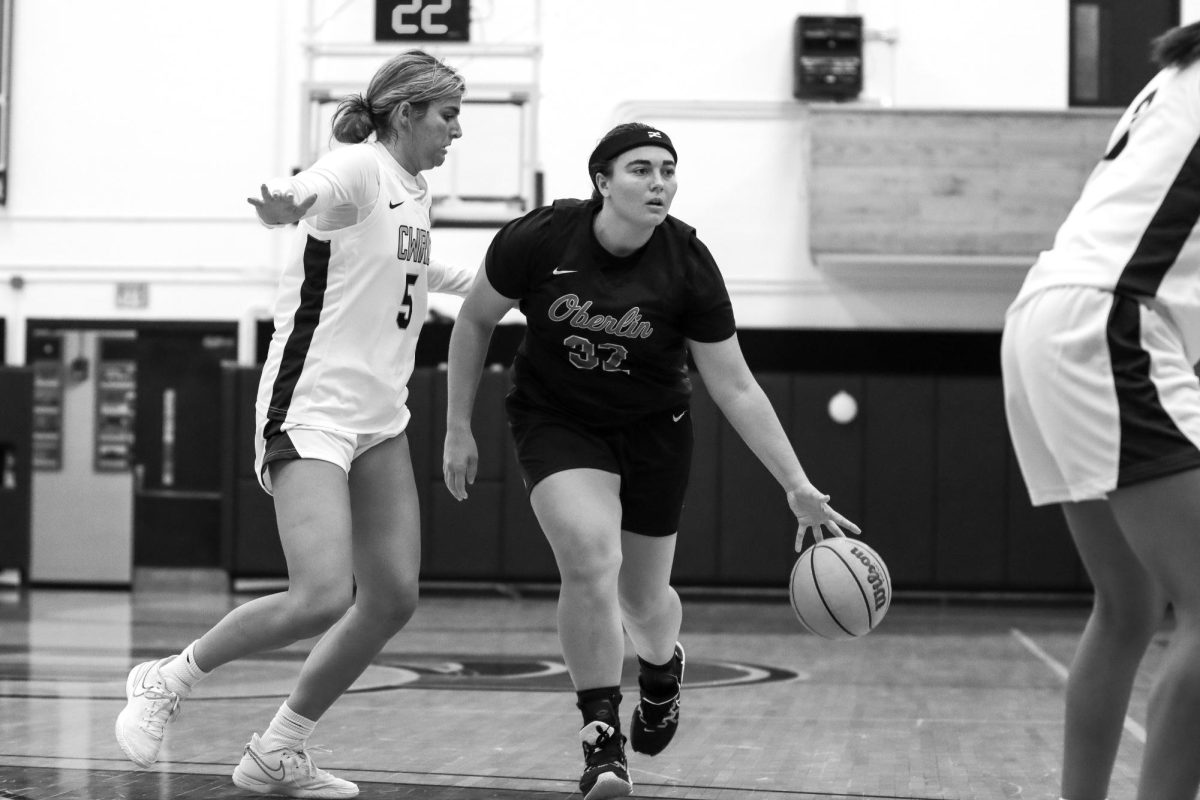A triple-digits fastball, a mid-90s “splinker” — a combination of a splitter and a sinker many pitchers are trying to replicate today — a 6’6” frame, and a presence on the mound that lets the hitter know “I’m better than you are”: Paul Skenes had all the tools to be one of the best pitchers of the 21st century coming out of college.
In his junior and final season at Louisiana State University, Skenes led the Tigers to the College World Series. The right hander went 13–2, with a 2.05 ERA, and struck out 209 in only 122.2 innings of work during the regular season. He wasn’t just beating people, he was blowing them away.
In the College World Series, Skenes made two starts, throwing a combined 15 2/3 innings, surrendering only two runs and striking out 21 to lead LSU to a championship victory against the University of Florida in a winner-takes-all game three. Skenes was named the tournament’s Most Outstanding Player.
The Pittsburgh Pirates jumped at the opportunity to make Skenes the first pick in the 2023 draft. MLB Pipeline’s Jonathan Mayo believed he was the best pitching prospect baseball had seen since Stephen Strasburg in 2009, and Strasburg was seen as the best collegiate pitching prospect ever.
Skenes started the 2024 season with the Pirates Triple-A affiliate. He performed well in spring training to the tune of a 3.0 ERA, — albeit in a limited amount of innings —- but the Pirates ultimately decided it would be best for him to begin the season in the minor leagues to limit the amount of innings put on Skenes arm in such a short time period. After all, just months prior, he was pitching on college baseball’s biggest stage.
On May 11, 2024, Skenes made his debut against the Chicago Cubs. The righty went four innings, giving up three runs while striking out seven. It was a modest start for Skene’s lofty standards, but his electric arsenal was on full display. His four-seam fastball averaged 100.1 mph and — against the third batter he ever faced in the MLB — fired a 101.9 mph heater to Cubs outfielder Cody Bellinger, the fastest by a Pirates starter in the pitch-tracking era.
Skenes started 23 games for the Pirates, going 11–3 while spinning a 1.96 ERA and striking out 170 in a mere 133 innings. At the midway point of the season, Skenes was announced as the starting pitcher for the NL in the All-Star game, making him the first player ever to be selected first overall in the draft and make the All-Star team the next season.
On Monday, Skenes was named the National League’s Jackie Robinson Rookie of the Year Award winner by the Baseball Writers’ Association of America after a historic rookie season. On top of that, Skenes was a finalist for the NL Cy Young, where he took third behind Chris Sale and Zach Wheeler.
Since the awards introduction in 1947, 42 pitchers have been named rookie of the year. Skenes rookie season was one for the ages, but where does it stack up all-time?
His 1.96 ERA is the lowest mark all-time for a ROY starting pitcher, besting Stan Bahnsen who posted a 2.05 ERA in 1968, the claimed the year of the pitcher. Bahnsen’s ERA+ — which takes into account average league output and ballpark factors — was 140, which was 40 percent better than league average.
Among pitchers who threw over 100 innings in their rookie season, Skenes 214 ERA+ is the best of the bunch. Ahead of the previous mark of 176 from Jose Fernandez in 2013 and Todd Worrell in 1986, Skenes was 114 percent better than league average.
Strikeouts were Skenes’ bread and butter coming into the league. It is important to note, there are simply more strikeouts in the current climate of baseball than in previous decades. In 1968, a year where the league’s ERA was 2.98, pitchers struck out 19,143. In 2024, the league’s ERA was 4.07 and there were 41,199 strikeouts. Skenes’ 170 strikeouts tie him for tenth all-time, but eight people ahead of him threw at least 190 innings.
Skenes having less innings pitched is a product of two things: the trend of starting pitchers throwing less pitches as more teams place an emphasis on throwing harder and punching batters out and Skenes being called up after the Pirates already played 39 games. A better way to see where Skenes ranks — taking into account his innings limitation — is strikeout rates. His 11.5 K/9 is second best all-time for a ROY starting pitcher, trailing Kerry Wood’s 12.6 in 1998. Skenes K/BB ratio of 5.3 is the best mark ever posted by a rookie starting pitcher, behind reliever Devin Williams 5.9 in the COVID-shortened 2020 season.
Skenes 0.95 WHIP (walks and hits per inning pitched) is the lowest mark for a ROY starting pitcher all-time, besting the previous mark of 0.98 set by Fernandez in 2011. They are the only two ROY pitchers to average less than one baserunner per inning.
His WAA (wins above average) — how many games Skene’s won for his team compared to if a league average player had started in his spot — was 4.8, tied for second. Trailing only Mark Fidrych who posted a 7.3 WAA in 1976 and equal to Fernadez and John Montefusco in 1978.
Four hundred and ninety eight days after he was drafted, Skenes was named ROY. He was just the second Pirate ever to win the award — Jason Bay in 2004. He was also just the fifth first overall pick to win ROY.
“This is cool,” Skenes said on MLB Network when asked what the award meant to him. “It puts a bow on this past year and we can look forward to next year.”
On the outside, there is no doubt Skenes rookie season was one of the best the game has ever seen. Yet, when taking a deep dive into how his stats rival other ROY winners, it puts into perspective just how special his rookie season was.
Skenes enters his sophomore season firmly entrenched as the Pirates’ ace. For now, fans of Skenes will have to anxiously wait and see what the Baton Rouge product can do in a full season of work. The numbers may get even better.


